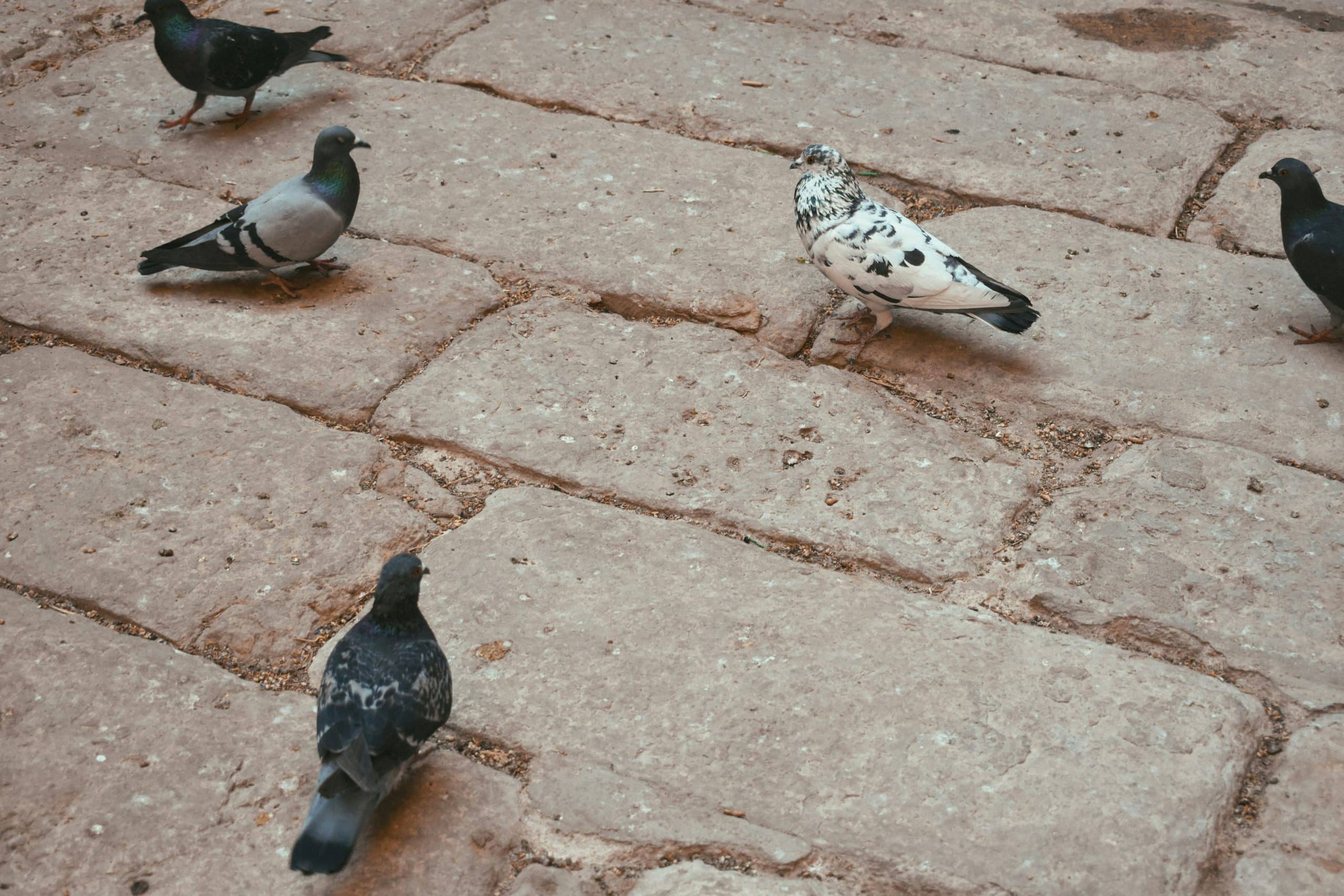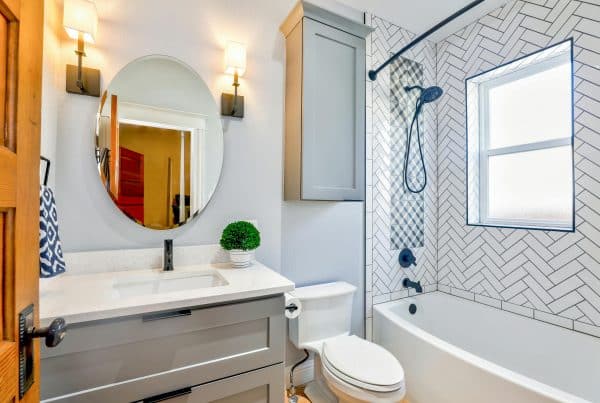Your home’s biggest threats aren’t always obvious. While you’re watching market trends and interest rates, tiny invaders could be quietly destroying thousands of dollars in property value. Some pest issues are immediate deal-breakers for buyers, while others create ongoing maintenance nightmares that compound over time.
Las Vegas homeowners face unique pest challenges compared to other regions, but understanding what to watch for can save you significant money whether you’re buying, selling, or maintaining your current property.
The Most Destructive Pest Isn’t What You’d Expect
Ask any homeowner about property-damaging pests, and most immediately think of termites. But according to Michelle, who owns Bug Emergency Pest Control and has 16 years of experience in the Las Vegas area, the answer might surprise you.
“Actually, pigeons. Pigeons are really disgusting and cause a lot of damage.”
A recent listing appointment reinforced this reality. The homeowner had to replace extensive structural elements due to pigeon damage from birds nesting in the eaves and front areas of the house. The accumulated droppings had eroded fascia, damaged eaves, and created thousands of dollars in necessary repairs.
Why Pigeons Are Property Value Killers:
Pigeons don’t discriminate based on home age or price point. They infiltrate solar panel systems, attics, and any accessible nesting areas. Their droppings are highly acidic and create ongoing erosion of building materials.
The damage compounds over time because pigeons return to established nesting sites year after year. What starts as minor cosmetic issues becomes structural repair needs that buyers either demand credits for or walk away from entirely.
Regional Pest Differences That Impact Your Purchase Decision
Las Vegas homeowners are relatively fortunate compared to other regions, but location within the valley creates different risk profiles you should understand before buying.
Termites: Geography Matters
While termites are standard concerns in many markets, Las Vegas has unique patterns. Michelle’s pest control company serves Laughlin and Bullhead City, where termites are common due to different climate conditions. In those areas, “every real estate transaction pretty much requires termite inspections” for all loan types, not just VA loans.
Las Vegas proper sees very few termite issues. Most local termite inspections return clean results, but VA loans still require these inspections as a precaution.
What Termite Inspections Actually Check:
- Proper soil-to-foundation grading (soil must be at correct levels)
- Wood-to-soil contact elimination
- Moisture conditions that attract termites
- Signs of existing termite activity
Even in Las Vegas, buyers discovered simple violations like old storage sheds with wood directly contacting the house or soil levels too high against the foundation. These issues are typically inexpensive fixes but must be addressed before loan approval.
Water Proximity Creates Mosquito Zones
Mosquito problems correlate directly with water proximity, but not always in obvious ways. Green Valley residents deal with significant mosquito issues despite not being near major water bodies, while other areas remain largely mosquito-free.
“If you live closer to a lake, a body of water, you got to watch out for mosquitoes,” Michelle notes. “In Green Valley, I get bit every time I go outside. In the evening at dusk is when they’re most active.”
Desert Shores residents likely experience more mosquito activity due to the community’s water features, while areas like Aliante or Summerlin see fewer issues.
Bed Bugs: The Traveler’s Problem
Las Vegas faces unique bed bug challenges due to the tourism industry. These pests commonly spread through hotels, casinos, and vacation rentals before making their way into residential properties.
How to Inspect for Bed Bugs:
- Check mattress seams for dark coloration
- Look for small dark stains on bedding
- Use phone flashlight to inspect thoroughly
- Focus on areas where mattresses meet bed frames
Michelle emphasizes checking hotel rooms immediately upon arrival: “First thing I do is get my flashlight, look at the mattresses. You can tell by the seams on the mattress if they’re dark in color.”
For homebuyers, bed bug infestations can be deal-breakers because treatment is expensive and time-consuming. Properties with active infestations may need professional treatment costing thousands of dollars plus temporary relocation during fumigation.
Scorpions and Construction Areas
New construction areas and communities with extensive palm tree landscaping create higher scorpion risks. These pests emerge when construction disturbs their natural habitats.
“Especially when they’re building the new builds where they’re digging, it just brings them all out,” Michelle explains. “If you got a bunch of palm trees, there’s a likelihood you got them because they live in palm trees.”
Southwest Las Vegas communities and areas near Red Rock have historically experienced more scorpion activity. This doesn’t make these areas undesirable, but buyers should budget for regular pest control service.
The Surprising Pest: Weeds
Many homeowners don’t realize weeds qualify as invasive pests requiring professional treatment. Michelle’s company treats weeds as part of comprehensive pest control because they’re “invasive” species that damage landscaping and property aesthetics.
Modern weed control faces unique challenges with artificial turf installations. Weeds growing through turf edges are difficult to remove manually and often require targeted treatment that won’t damage the artificial surface.
How the Pest Control Industry Evolution Protects Your Investment
The pest control industry has shifted significantly toward eco-friendly treatments, which impacts both effectiveness and safety for homeowners with children and pets.
Modern Treatment Methods:
- Natural oil-based repellents (rosemary oil, citrus oil)
- Targeted application rather than broad-spectrum chemicals
- Technology integration for accurate pest identification
- Smartphone apps that identify bugs through photos
“Everything changes within time. We advance – new chemicals, new ways of treating pests. We’re in a day and age where we have technology,” Michelle notes about the industry evolution over her 16 years in business.
The shift toward eco-friendly options addresses homeowner concerns about chemical exposure while maintaining effectiveness against common pests.
Red Flags During Home Tours and Inspections
Experienced pest control professionals can often detect infestations that untrained eyes miss. Here’s what to watch for during home tours:
Smell Detection
“When I walk into a house, sometimes you can smell roaches. For me, I can smell an infestation,” Michelle explains. The smell is described as musty but distinct from normal household odors.
Inspection Checklist:
- Under-sink areas for visible pest activity
- Around drain areas where pests commonly hide
- Dark stains on surfaces (not major stains, but small dark spots)
- Wood-to-soil contact points around the property exterior
- Evidence of nesting materials in accessible areas
Visual Inspection Points
Even vacant properties that have been on the market for 60+ days commonly show some pest activity, which is normal. The key is distinguishing between minor issues and active infestations.
Look under sinks, around plumbing entry points, and in areas where pest activity would be most obvious. Minor pest evidence in vacant homes isn’t necessarily concerning, but signs of active infestation should trigger professional inspection.
Cost-Benefit Analysis of Pest Control
Regular pest control service in Las Vegas typically costs $50-75 monthly for comprehensive treatment. This represents insurance against major damage repair costs.
Prevention vs. Reaction Costs:
- Monthly pest control: $600-900 annually
- Pigeon damage repairs: $3,000-10,000+
- Termite damage (rare but possible): $5,000-15,000+
- Bed bug treatment: $1,000-3,000
The prevention cost is minimal compared to damage repair expenses, especially for high-value properties.
DIY vs. Professional Treatment
Modern retail pest control products are more effective than ever, making DIY treatment viable for many situations. However, professional service provides advantages:
Professional Service Benefits:
- Regular monitoring and early detection
- Access to commercial-grade treatment options
- Expertise in identifying pest entry points
- Warranty coverage for treatment effectiveness
When DIY Makes Sense:
- Minor occasional pest sightings
- Budget constraints
- Properties with minimal risk factors
- Homeowners comfortable with product application
Property-Specific Risk Assessment
Different property types face different pest risks based on age, construction style, and location:
Higher Risk Properties:
- Homes near construction zones
- Properties with extensive palm tree landscaping
- Homes near water features or desert washes
- Older homes with more entry points
- Properties with basements or crawl spaces
Lower Risk Properties:
- Newer construction with modern pest barriers
- Properties in established neighborhoods
- Homes with minimal landscaping
- Properties with recent pest control treatment history
Impact on Home Sale Transactions
Pest issues can derail sales in multiple ways beyond just buyer concerns:
Financing Implications:
- VA loans require clean termite inspections
- FHA loans may flag certain pest damage
- Conventional loans rarely have pest-related requirements
- Cash buyers may negotiate credits for pest treatment
Timing Concerns:
- Professional treatment may require temporary vacancy
- Some treatments need multiple applications
- Fumigation can delay closing dates
- Re-inspection requirements add transaction time
Preventive Strategies for Current Homeowners
Protecting your property value requires proactive pest management:
Monthly Maintenance:
- Visual inspection of entry points
- Clearing vegetation from foundation perimeter
- Addressing moisture issues promptly
- Professional service for comprehensive coverage
Seasonal Considerations:
- Spring preparation for summer pest activity
- Fall treatment before winter pest seeking shelter
- Summer monitoring for increased activity levels
- Year-round vigilance in Las Vegas climate
What This Means for Your Next Real Estate Decision
Whether buying or selling, pest issues require specific attention during transactions:
For Buyers:
- Budget for initial pest treatment regardless of apparent issues
- Understand regional risks based on specific location
- Factor ongoing pest control costs into homeownership expenses
- Request pest inspection even when not required by lender
For Sellers:
- Address obvious pest issues before listing
- Consider professional treatment to prevent buyer concerns
- Document recent pest control service for buyer confidence
- Price appropriately if pest issues are known but unaddressed
Frequently Asked Questions
What pests cause the most property damage in Las Vegas? Pigeons cause the most structural property damage in Las Vegas, eroding fascia, eaves, and infiltrating solar panel systems and attics. Their acidic droppings create ongoing erosion that compounds over time and can require thousands of dollars in repairs.
How do I inspect for bed bugs when traveling? Use your phone’s flashlight to check mattress seams for dark coloration and small dark stains. Focus on areas where mattresses meet bed frames and inspect thoroughly before settling into any hotel room, especially in Las Vegas due to tourism industry pest transfer.
Are termites a problem in Las Vegas homes? Termites are very rare in Las Vegas proper, with most termite inspections returning clean results. However, they’re common in nearby areas like Laughlin and Bullhead City due to different climate conditions. VA loans still require termite inspections as a precaution.
What areas of Las Vegas have mosquito issues? Green Valley experiences significant mosquito problems despite not being near major water bodies, with peak activity at dusk. Areas near water features like Desert Shores likely have more mosquito activity, while other neighborhoods may see fewer issues.
How can I tell if a house has pest problems? Look for musty smells that indicate roach infestations, inspect under sinks and around drains for pest activity, check for small dark stains on surfaces, and examine wood-to-soil contact points around the property exterior for potential pest entry points.
What’s the difference between pest control costs and damage repair costs? Monthly pest control costs $50-75 and prevents major damage. Repair costs are exponentially higher: pigeon damage repairs cost $3,000-10,000+, termite damage costs $5,000-15,000+, and bed bug treatment costs $1,000-3,000. Prevention is far more cost-effective.
When should I hire professional pest control vs DIY treatment? Professional service provides regular monitoring, early detection, commercial-grade treatments, and warranty coverage. DIY makes sense for minor occasional pest sightings, budget constraints, or properties with minimal risk factors when homeowners are comfortable with product application.
Key Takeaways:
- Pigeons cause more property damage than most people realize
- Location within Las Vegas creates different pest risk profiles
- Eco-friendly treatments are now standard and equally effective
- Monthly pest control ($50-75) prevents thousands in damage costs
- Smell and visual inspection can detect most pest issues early
- Professional treatment provides warranty protection and expertise
- Property type and age influence pest risk assessment significantly






